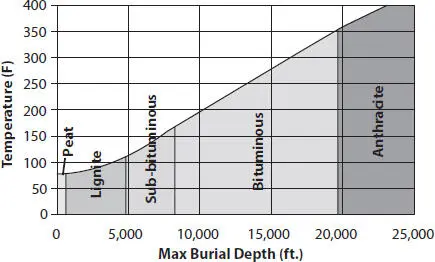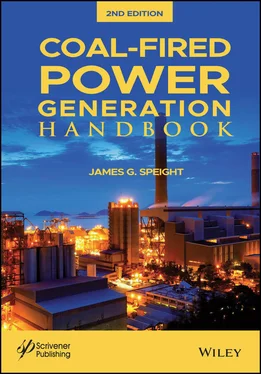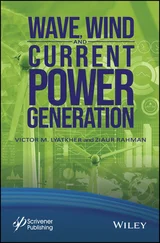In more general terms, the coalification of coal is a consequence of thermal effects and pressure through compaction of the sediment, which depending upon the initial events – including the composition of the coal purposes, will be site specific. However, the coalification processes involved in coal formation are marked by a well- defined progression of increasing rank that does increase with depth, and the combination of depth of burial and geothermal gradient essentially determine the rank of coal. Water, carbon dioxide and methane are generated during the progressive coalification.
Methane is the predominant gas generated in the bituminous coal and anthracite stages of coalification, and the carbon dioxide produced at lower ranks is typically flushed out of the coal by methane. The sorption capacity of coal increases with rank. Typically, high-rank coal can absorb more gas and the adsorptive capacity of coal for methane increases with coal rank. The sorption capacity of coal can be influenced by different intrusions and by the tectonic events such as folding and faulting. Coals near igneous intrusions, such as dykes, may contain calcites and pyrites which are likely to influence the ability of gases to drain.
To follow on from above, it was the difference in coal properties of Gondwana (Indian) coals that led to the formation of the drift theory . The mode of deposition of coal forming can be explained as follows: (i) coal is formed largely from terrestrial plant material growing on dry land and not in swamps or bogs, (ii) the original plant debris was transported by water and deposited under water in lakes or in the sea, (iii) the transported plant debris, by its relative low density even when water logged, was sorted from inorganic sediment and drifted to a greater distance in open water – the sediments, inorganic and organic, settled down in regular succession, (iv) the process of sedimentation of the organic and inorganic materials continues until the currents can deposit the transported vegetation in the locations, (v) these deposits are covered subsequently by mineral matter, sand, and results in coal seams, (vi) the depositions can also stop for a particular period and again begin to occur when tidal and current conditions are correct, and (vii) even within coal rank, coal properties vary widely due to the varied types of vegetation deposited.
Table 1.2 Illustration of the effects that can contribute to the coalification process. *
| Coal rank |
DoB |
MT |
C |
VM |
CV |
M |
| Lignite |
650-4,900 |
25-45 |
60 |
49-53 |
23,000 |
30-50 |
| Subbituminous |
4,900-8,200 |
45-75 |
71-77 |
42-49 |
29,300 |
10-30 |
| Bituminous |
8,200-19,500 |
75-180 |
77-87 |
29-42 |
36,250 |
5-10 |
| Anthracite |
>19,500 |
>180 |
87-92 |
8-29 |
>38,000 |
<5 |
Key:
DoB: approximate depth of burial, feet.
MT: approximate maximum temperature during burial, °C.
C: approximate carbon content, % w/w dry ash-free basis.
VM: approximate volatile matter, % w/w dry, ash-free basis.
CV: approximate calorific value (heat content), ash-free basis.
M: approximate moisture content, % w/w ( in situ ).
*The data are for illustrative purposes only; the actual conditions may vary somewhat from the data presented here.
It is also factual that marine fossils such as fish, mollusks, and brachiopods occur in coal. Coal balls , which are rounded masses of matted and exceptionally well-preserved plant and animal fossils (including marine creatures) are found within coal strata and associated with coal strata (Mamay and Yochelson, 1962). Since there is little anatomical evidence suggesting that coal plants were adapted to marine swamps, the occurrence of marine animals with non-marine plants suggests mixing during transport, thus favoring the allochthonous model (Rupke, 1969; Cohen, 1970).
Many factors determine the composition of coal: (i) the mode of accumulation and burial of the plant debris forming the deposits, (ii) the age of the deposits and the geographical distribution, (iii) the structure of the coal-forming plants, particularly details of structure that affect chemical composition or resistance to decay, (iv) the chemical composition of the coal-forming debris and its resistance to decay, (v) the nature and intensity of the peat-decaying agencies, and (vi) the subsequent geological history of the residual products of decay of the plant debris forming the deposits. In short, coal composition is subject to site-specific effects and is difficult to generalize on a global basis (Speight, 2013).
In summary, there are advantages and disadvantages of both theories. While the coal purist may favor one or the other, there are the pragmatists who will recognize the merits of both theories. Whichever theory is correct (if that is possible) and whatever the origin of coal, there are expected to be differences in properties and behavior.
Finally, Hilt’s law is a geological term that states the deeper the coal seam, the deeper the rank (grade) of the coal – i.e., anthracite would be expected to lie in deeper buried seams than lignite (Figure 1.1) (Elphick and Suggate, 1964; Suggate, 1974; Ward, 2008). The law holds true if the thermal gradient is entirely vertical, but metamorphism may cause lateral changes of rank, irrespective of depth. Furthermore, increasing depth of burial results in a decrease in the oxygen content of the coal.
Chemically, coal is a hydrogen-deficient hydrocarbon with an atomic hydrogen-to-carbon ratio near 0.8, as compared to crude oil hydrocarbon derivatives, which have an atomic hydrogen-to-carbon ratio approximately equal to 2, and methane (CH 4) that has an atomic carbon-to-hydrogen ratio equal to 4. For this reason, any process used to convert coal to alternative fuels must add hydrogen or redistribute the hydrogen in the original coal to generate hydrogen-rich products and coke (Speight, 2013).
The chemical composition of the coal is defined in terms of its proximate and ultimate (elemental) analyses ( Chapter 5) (Speight, 2013, 2020). The parameters of proximate analysis are moisture, volatile matter, ash, and fixed carbon while the ultimate analysis (also referred to as the elemental analysis) encompasses the quantitative determination of carbon, hydrogen, nitrogen, sulfur, and oxygen within the coal. Additionally, specific physical and mechanical properties of coal and particular carbonization properties are also determined.

Figure 1.1Schematic showing tendency of coal rank to increase with depth of burial*.
*Numbers are approximate and used for illustration only; peat is included only for comparison and it should not be construed for this diagram that peat is a type of coal.
The current estimates for the longevity of each fossil fuel are estimated from the reserves/ production ratio (BP, 2019) which gives an indication (in years) of how long each fossil fuel will last at the current rates of production. The estimates vary from at least 50 years of crude oil at current rates of consumption with natural gas varying upwards of 100 years. On the other hand, coal remains in adequate supply and at current rates of recovery and consumption, the world global coal reserves have been variously estimated to have a reserves/ production ratio of at least 155 years. However, as with all estimates of resource longevity, coal longevity is subject to the assumed rate of consumption remaining at the current rate of consumption and, moreover, to technological developments that dictate the rate at which the coal can be mined. But most importantly, coal is a fossil fuel and an unclean energy source that will only add to global warming. In fact, the next time electricity is advertised as a clean energy source just consider the means by which the majority of electricity is produced – almost 50% of the electricity generated in the United States derives from coal (Energy Information Administration, 2007; Speight, 2013).
Читать дальше













